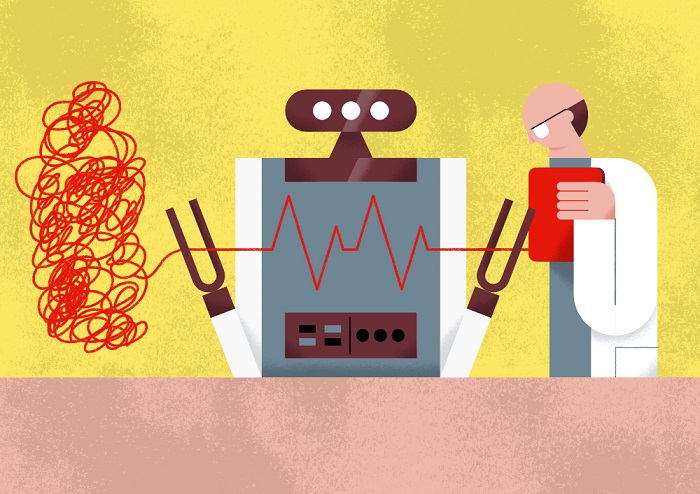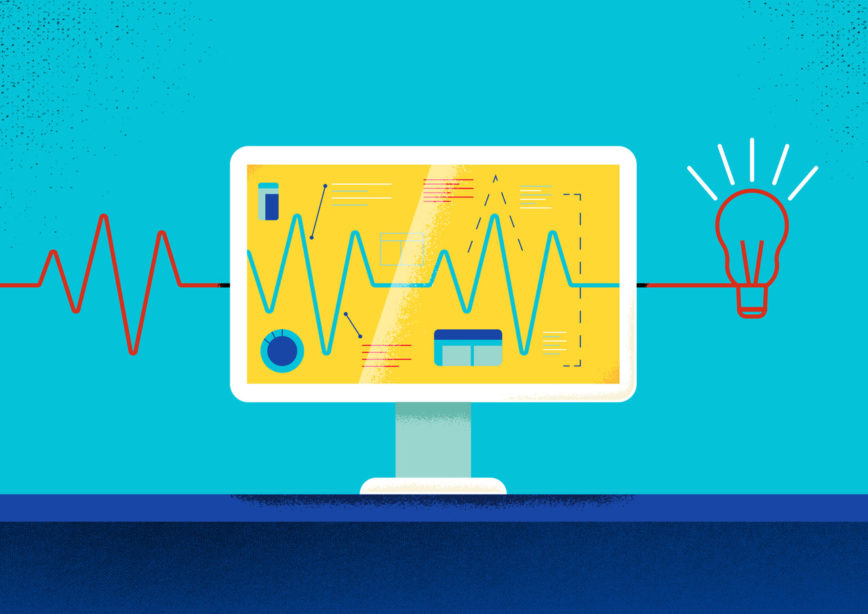Recently, there has been a lot of discussion about how medicine, patients and doctors can profit from Artificial Intelligence. In fact, AI is already supporting clinicians and citizens. Certified algorithms compliant with cardiological guidelines have gained the trust of doctors, supporting their daily work. One of these algorithms helps in ECG analysis. The following interview with Rafał Samborski, CEO of Cardiomatics, looks at the role of AI in cardiology.
Today, most AI-based solutions find application in cardiology. Can AI potentially transform the prevention and diagnosis of cardiovascular diseases?
More than 1 billion people are living with some form of cardiovascular disease. According to statistics from the World Health Organization, 17.9 million people die each year from CVDs. That’s 31% of all deaths worldwide! AI will not solve 100% of the problems, but even a 1% change means that the lives of thousands of patients will be saved and improved. Most of the AI research in the field of cardiology is currently focused on early diagnosis, but the future will definitely involve prediction and prevention as well.
From the patient’s perspective, there are already telemedicine platforms available that allow the monitoring of a patient’s health at home, reducing the number hospital visits and giving patients the important, comforting feeling of being under constant care. AI is also helping clinics in their daily work, assisting cardiologists in perfecting patient outcomes, particularly through the use of algorithms for accurate ECG analysis. The progress in this field is impressive. In 2017, the FDA approved the use of six new algorithms and, last year, this increased to 23, most of them in cardiology and radiology.
How do algorithms help cardiologists in their daily duties?
The available technology allows us to monitor patients 24/7 using different sensors, both in the hospital and at home. They are getting smaller and easier to use for patients of all ages. This is great – we have diagnosis possibilities that weren’t possible a decade ago, and patients are already profiting from these technological advancements. And the official medical recommendations have followed this development. Cardiologists are obligated to collect and analyse more data than ever before. Algorithms are here to make this more feasible.
Let me give an example. We observed that physicians spend 30-60 minutes on a typical 24h ECG-Holter examination. Average small cardiological clinics do 100 of these every month. Bigger ones can easily do 500 of them. An algorithm can easily cut this time to a couple of clicks in a web application and reading the final report. This saves at least 80% of the physician’s time. What’s more, it’s also about patient safety. Every additional pair of eyes should be introduced to help make a precise and fast diagnosis when it’s required.
And how would you convince an experienced cardiologist to trust AI?
There are three fundamental factors and tools necessary to build that trust. First, you can publish a benchmark of algorithm employing databases that are industry standard. The second tool is to apply the algorithm in clinical research performed by well recognised clinical sites. But at the end of the day, it is best to fulfil head to head tests. In Cardiomatics, we encourage our customers to send recordings to Cardiomatics while still analysing them with traditional software. We haven’t had a situation in which a clinic did not decide to continue after this trial period.
On the contrary, clinics are usually surprised by the reliability of the algorithms and the precision of the analysis. We are not aware of how much progress has been made recently in machine learning. AI is becoming a trustworthy assistant to cardiologists. I believe that a team of AI and cardiologists will make the most of the medical sciences and recent technological progress.
How do patients react when they find out that computers, not real doctors, are checking their hearts? From your experience, does it make a difference to them?
Let me tell you a story. One year ago, I visited one of our customers in Switzerland, and he said to me that, with Cardiomatics, patients receive a complete summary of the cardiological consultation, including an ECG-Holter interpretation, by email while on their way back home after the visit. Before Cardiomatics, there were days of anxious waiting for patients before the description was ready. In my experience, patients welcome the use of AI. Every patient wants to be sure that all available resources have been engaged to guarantee the right diagnosis and best results. It’s not about AI or a doctor; it’s about a doctor equipped with AI. We should remember that the final decision is always on the doctor – he shares the diagnosis with the patient, plans the treatment and accompanies the patient during the illness.

Is ECG signal interpretation a kind of art of the medical sciences or merely mathematical analysis?
When performed by a physician, ECG interpretation is a function of experience, rules and art. There is even quite a popular book on the subject called “12-Lead ECG: The Art of Interpretation”. When a human interprets an ECG, they see a curve. It works on a visual layer. An algorithm sees a stream of numbers instead of a picture, so the task becomes a mathematical problem. But, ultimately, you cannot build effective algorithms without knowledge of the domain. This knowledge and the experience of our medical team are a piece of art in Cardiomatics. We shouldn’t forget that algorithms are also trained on the data generated by cardiologists. There is a strong correlation between the experience of medical professionals and machine learning. The interpretation of ECGs is an essential part of the decision-making process, influencing subsequent clinical steps. That’s why it’s so crucial that the analysis includes even the smallest detail.
What are the biggest concerns about AI in cardiology? What are your counter-arguments?
From the physician’s perspective, the safety of the patient will always be the biggest concern. Primum non nocere – first, to do no harm. It is hard to prove the long-term safeness of tools that haven’t been here for more than a century, like manual interpretation has. That’s why we work with cardiologists and experts in the field of AI to guarantee the best outcomes.
Another big concern is data going out of the hospital. You cannot build an efficient AI system as stand-alone software. You cannot use the power of Google Search without access to the internet. A typical IT setting in a hospital has a very hermetic system with (preferably) no connection to the outside world. Fortunately, with the appropriate data protection tools and procedures, patient information can be stored and exchanged with no concerns about security issues.
You’ve probably had to answer this question many times: how precise are the algorithms?
I can tell you that we have more than 99% per cent rate. But, at the end of the day, what we are most proud of is that the algorithm performs exceptionally well on the real-life data coming from our customers. We not only exclusively focus on technology, but also on its correct implementation, so it’s used in the best way to support the clinicians’ work.
What makes the AI-driven and cloud-based ECG analysis developed by Cardiomatics a reliable solution for hospitals?
Cardiomatics is certified as a Class IIa medical device. This is the same class as most of the hardware in hospitals. This means that our software can be part of all medical procedures from a regulatory perspective. We use a pay per use business model, which means that the customer pays only when they use our algorithms. Hospitals can cover 100% of the cost of Cardiomatics through reimbursement.
Clinics using Cardiomatics are more efficient than those without it since cardiologists’ time can be better allocated. The patient can also benefit – waiting times for examination results are shorter, and the mental burden resulting from uncertainty is reduced. Here again, I have to emphasise the critical role of the right cooperation when putting the AI tool into the workflow. We do not offer our algorithms in a box to simply unpack, switch on, and a miracle happens.
What is the scope of application of your solution?
We have more than 100 institutions using Cardiomatics daily across Europe, most of them in the DACH region. They range from small practices with 2-3 cardiologists up to chains of hospitals. Cardiomatics is also recognised as a reliable tool by academic clinicians and is used as a research tool by the University of Bern.
How is the tool being improved and in which ways will it be developed in the future?
Cardiomatics consists of algorithms and a user application. The algorithm improves when it is used on groups of patients. Currently, we are focused on the detection of arrhythmias, but we are going to deploy algorithms for patients with implantable devices or patients after ablation in 2020. We are also continually working on improving the performance of the existing modules, mainly by increasing the training dataset and employing more and more advanced modelling methods.
The data used to train algorithms comes from two different sources. As of Aug 2019, we have almost 100 thousand hours of multichannel ECGs (or above 400 million heartbeats) in our database and a significant part of this data is employed to train the models (either in supervised or unsupervised paradigms). Some of them we commercially order in cooperating clinics (e.g. Medical University of Warsaw) to cover some less common groups of patients.
Thank you for your time.

